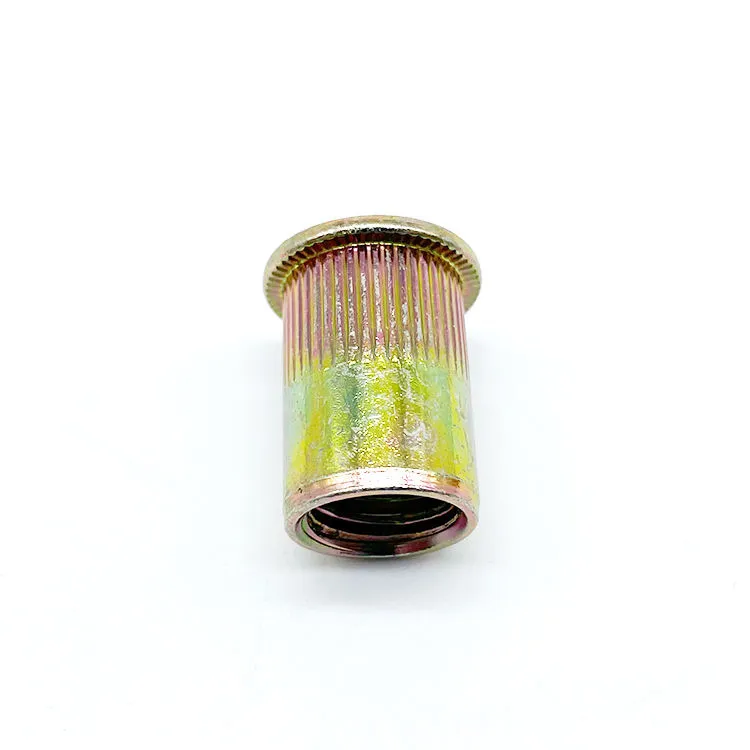

Understanding ASTM A325 Type 3 High Strength Bolts for Structural Applications
Nov . 25, 2024 02:44 Back to list
Understanding ASTM A325 Type 3 High Strength Bolts for Structural Applications
Understanding ASTM A325 Type 3 Bolts A Comprehensive Overview
When it comes to construction and engineering projects, the integrity and reliability of fastening solutions, such as bolts, play a pivotal role in ensuring overall structural safety. Among the various types of bolts, ASTM A325 Type 3 bolts stand out due to their unique properties and applications. This article explores the specifics of ASTM A325 Type 3 bolts, their composition, applications, and advantages.
Composition and Characteristics
ASTM A325 refers to a standard specification for structural bolts used in steel structures. Type 3 bolts are specifically designed for high-strength applications and have distinct properties that differentiate them from other types. Made from a carbon steel alloy, these bolts are known for their high tensile strength and ability to withstand harsh environmental conditions.
One of the key characteristics of Type 3 bolts is their corrosion-resistant properties. They are typically hot-dip galvanized, which provides a protective coating that prevents rust and other forms of corrosion. This makes them particularly suitable for outdoor applications or in environments where moisture and other corrosive elements are prevalent.
Mechanical Properties
ASTM A325 Type 3 bolts boast robust mechanical properties, including a minimum yield strength of 80 ksi (kilopounds per square inch) and a minimum tensile strength of around 120 ksi. These high-strength characteristics make them ideal for use in heavy structural applications such as bridges, high-rise buildings, and other infrastructure projects where high loads and structural integrity are critical.
Moreover, the ASTM A325 standard specifies that these bolts are suitable for use with various joining methods, including threaded and unthreaded applications. This versatility makes them a popular choice among engineers and construction professionals.
astm a325 type 3

Applications
The applications of ASTM A325 Type 3 bolts are extensive. They are primarily used in structural connections within buildings and bridges where high strength and corrosion resistance are essential. Typical applications include fastening steel beams and columns, securing trusses, and providing stability to various structural components. Due to their excellent performance in challenging conditions, these bolts are often utilized in marine environments, industrial settings, and other areas exposed to corrosive elements.
Additionally, their corrosion-resistant properties enhance their longevity, reducing the need for frequent maintenance and replacement. This is particularly advantageous in large-scale projects where minimizing downtime is crucial.
Advantages
Choosing ASTM A325 Type 3 bolts offers numerous advantages. Their high strength ensures that structures can withstand significant loads without compromising safety. The corrosion resistance extends the service life of structures, ultimately leading to cost savings in maintenance and repairs over time.
Furthermore, the availability of these bolts in various sizes and specifications allows for flexibility in design and engineering applications. This adaptability, combined with their reliable performance, makes ASTM A325 Type 3 bolts a preferred choice in modern construction.
Conclusion
In conclusion, ASTM A325 Type 3 bolts represent a vital component in the construction industry, providing high strength and corrosion resistance essential for ensuring the safety and durability of structural projects. Understanding the properties and applications of these bolts helps engineers and contractors make informed decisions, ultimately leading to safer and more sustainable construction practices. Whether for bridges, buildings, or other structures, ASTM A325 Type 3 bolts are a testament to the advancements in materials engineering and their pivotal role in today's infrastructure development.
Latest news
-
MS Slotted Channel Fasteners Durable, Pre-Galvanized Mild Steel
NewsApr.29,2025
-
High-Strength Self Tapping Screws for Cast Iron Fast Installation & Durability
NewsApr.29,2025
-
Mild Steel Slotted Channel & Fasteners - Durable, Adjustable Solutions
NewsApr.28,2025
-
ISO Spring Washer - Secure, Durable Fastener with ISO Compliance ISO Spring Washer
NewsApr.28,2025
-
Mild Steel Stud Bolt Fasteners - High Strength & Corrosion Resistant
NewsApr.28,2025
-
M6x45 Shear Bolt - High-Strength Safety Fastener
NewsApr.28,2025

